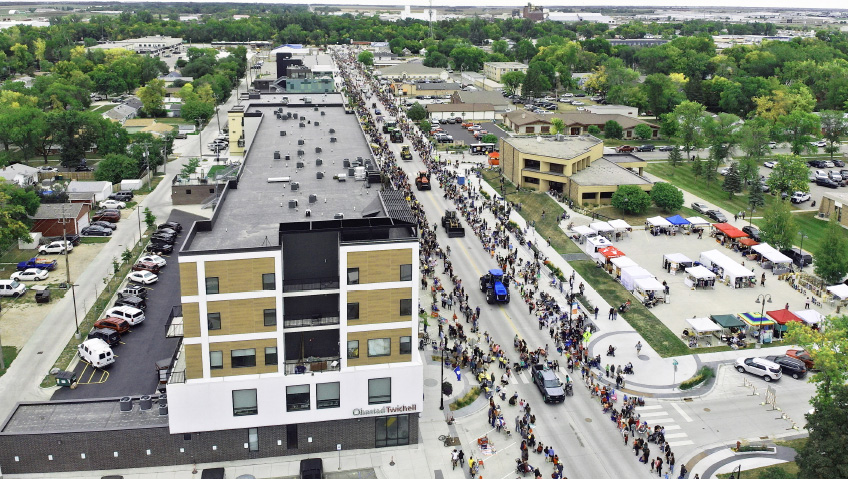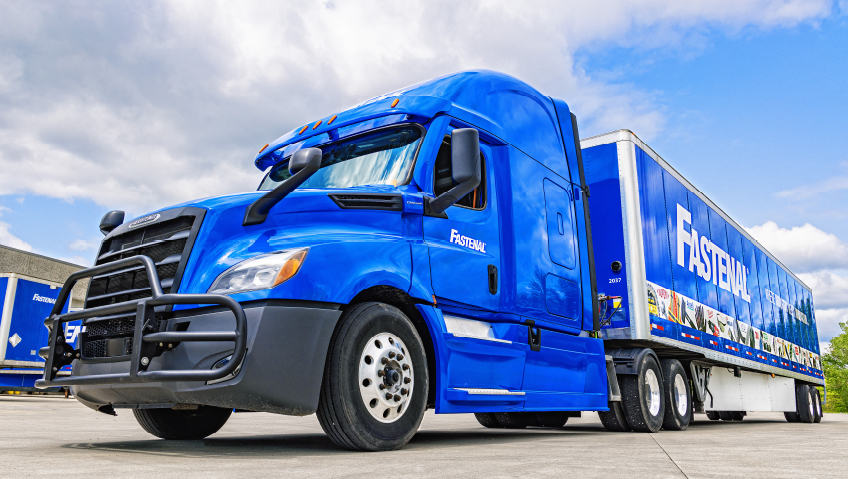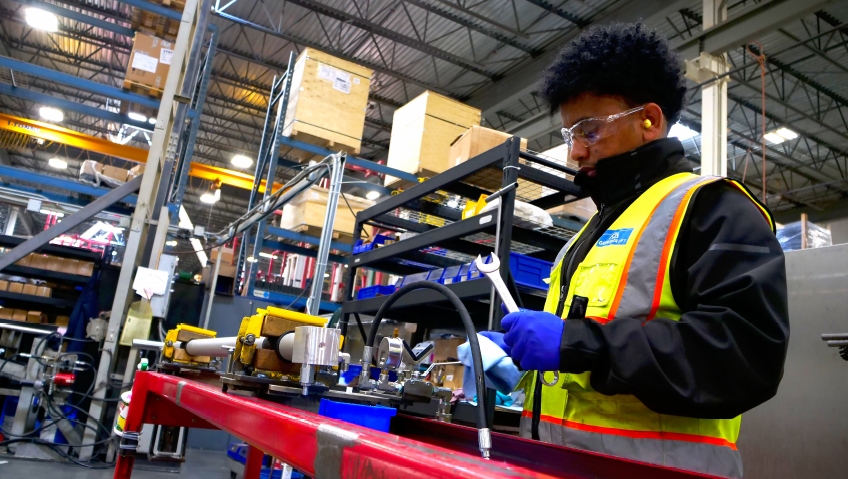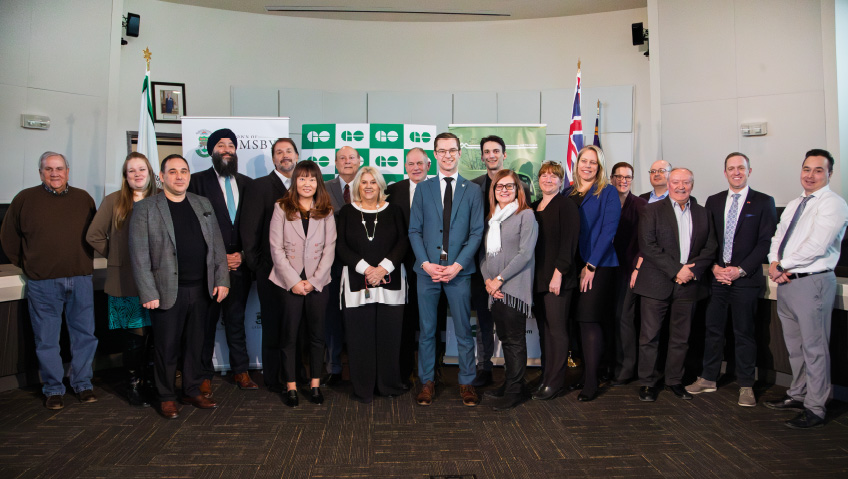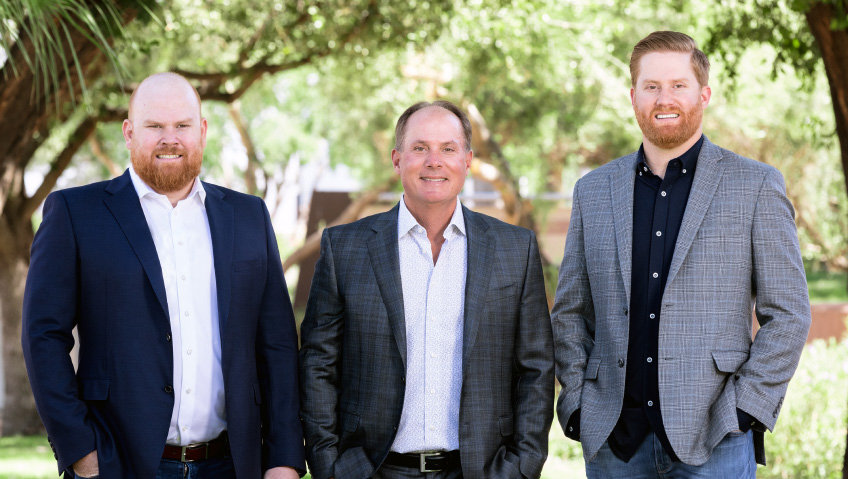Boasting a friendly, small-town atmosphere along with the advantages of a larger urban area, West Fargo is one of the fastest growing communities in North Dakota. “It’s a small-town feel with big-town amenities,” says Director of Economic Development, Casey Sanders-Berglund.
“Our city has a focus on quality of life,” she says. “We have a really robust parks district, and then we also have 21 K-12 schools. We’re the second largest school district in North Dakota and have a good reputation for families wanting to be part of West Fargo for our strong school system.”
In addition, the cost of living is reasonable in West Fargo. “Housing is an issue in most places, but housing is relatively affordable in this area compared to much of the other parts of the country,” says Dan Hanson, Senior Director of Community Development.
The city of 41,000 boasts a wide range of business opportunities for newcomers eager to take advantage of all the area has to offer. “We’re really diverse,” Sanders-Berglund says. This economic diversity “keeps us very economically resilient,” making it a strategic win for the community.
“The metro area has a relatively well-rounded economy compared to a lot of other places,” adds Hanson. “And so, when we have issues in one sector, we have other sectors that are kind of taking over. Just as an example, during the most recent housing crash, the Fargo, Moorhead, and West Fargo area here didn’t really see many of the same issues that the rest of the country was seeing in terms of disruption to the local economy.”
One of the biggest economic sectors in West Fargo is agriculture. North Dakota is the nation’s leading producer of several crops. The Red River Valley is especially known for growing potatoes and sugar beets, and this ag presence has naturally attracted a growing AgTech sector.
“That’s another emerging industry not only in West Fargo, but throughout the region,” says Sanders-Berglund. Most notably, the city is approximately 20 miles from the Grand Farm Innovation Campus, “a collaborative network of growers, corporations, startups, educators, researchers, government, and investors working together to solve problems in agriculture through technology and innovation,” as Grand Farm says on its website. “It’s an autonomous farm, using unmanned equipment and new technologies to explore the future of the ag industry.”
This unique AgTech project attracts industry experts from around the globe, and local leaders expect West Fargo to benefit from the international activity. “We’ll see some spinoffs from people that won’t necessarily set up directly in the Grand Farm campus, but will be in an adjacent industry to what they’re doing, what they’re exploring,” says Sanders-Berglund.
Indeed, West Fargo’s many advantages have attracted major companies in myriad sectors. “We have a couple of national headquarters here, like Bobcat,” says Sanders-Berglund.
“I think the biomedical and technology industry is a blossoming area of our economy here locally,” say City Planner Aaron Nelson. “We’re also a regional medical hub.” Other leading companies, while headquartered elsewhere, maintain a major presence in the area.
Unmanned Aerial Systems (UAS) is one exciting area of tech research located within the region, earning North Dakota the nickname ‘the Silicon Valley of Drones.’ “There’s not a lot of air traffic in these parts, so that’s one of the main advantages here,” says Nelson. “It’s a statewide initiative, and that’s tied into some of our local universities as well, including North Dakota State University, which is located in our metro here, as well as two other local universities.” This has a positive ripple effect on West Fargo and the local workforce. “We get a lot of college graduates that like to stay in the area and are always looking for jobs.”
Local leaders work closely with neighboring communities to benefit local and regional business. “Here in West Fargo, we’re part of a metro,” Sanders-Berglund explains. “The three big communities that come together often are West Fargo, Fargo, and Moorhead. But oftentimes, you’ll see [these efforts] aligned with Horace or Casselton, some of those other small communities.”
The Greater Fargo Moorhead Economic Development Corporation unites these communities with a common purpose. “It’s a metro-wide organization that all cities participate in and work very collectively together,” says Nelson.
In fact, people from outside the region often comment on how well these different entities collaborate for the good of all. “It’s almost surprising how well our elected officials can be aligned, how well we can work together,” says Sanders-Berglund. “[We] find some sort of common ground, some give and take.”
The city has plans in place to accommodate incoming businesses and is eager to attract businesses and professionals through incentives. “Right now, we’re in the process of doing the improvements for a new light industrial park called the Sandhills 6th Addition,” says Hanson. Developments are currently underway just north of I-94 on the west side of the city. The utilities were installed in 2024 and the roadways will be completed this year.
“In the last year, we also did a specific childcare facility improvement grant,” Sanders-Berglund tells us. “[Childcare is] a need for the workforce, and we decided to help maintain the childcare programs that we have within our city, paired with a goal to increase the capacity of childcare slots, whether that’s within existing programs or centers, in-home, or enticing a new childcare center or in-home program to kick off and start.”
Other incentives specifically target businesses that will help meet the city’s goals around quality of life while providing job opportunities, says Sanders-Berglund. “And not just jobs that increase the number of available employment opportunities, but jobs that offer a livable wage.”
Community leaders are working hard to maintain West Fargo’s growth and prosperity far into the future. “One of the big things that’s happening here locally is we have a major flood protection project that is underway that surrounds our metro area,” says Nelson. “That’s going to provide a substantial level of regional flood protection, including most of our extraterritorial area, or our future growth area. And so, once that project is complete, much of the floodplain will be remapped. There will be a lot of developable areas surrounding our city that will no longer be in the floodplain, opening up additional opportunity for more growth and development within our jurisdiction.”
In anticipation of this growth, local leaders are already putting together a master plan that will cover the targeted area. “That’s going to be taking a look at many different interrelated things that are necessary for future development and business opportunities, including a transportation network, expansion to future utility services into this area, and various land uses, whether it’s industrial, commercial, or housing,” Nelson explains.
In another effort to provide more developable land, the city is in the process of decommissioning its sewage lagoons. “The city is in possession of hundreds of acres of potentially developable land,” Nelson shares, “so that presents an opportunity for a substantial partnership.” Almost half of the lagoons have already been decommissioned and are now ready for development. Another four lagoon cells were decommissioned last year and will be ready for development within a year.
“There have basically been about 260 acres of lagoon property that have already been decommissioned,” says Hanson. “That’s one of the more exciting opportunities for growth and development.”
With burgeoning next-generation sectors like AgTech and UAS, a low cost of living, plenty of available land, and a cooperative spirit, West Fargo is sure to stay on a trajectory of growth far into the future. We look forward to seeing what comes next for this dynamic area.

